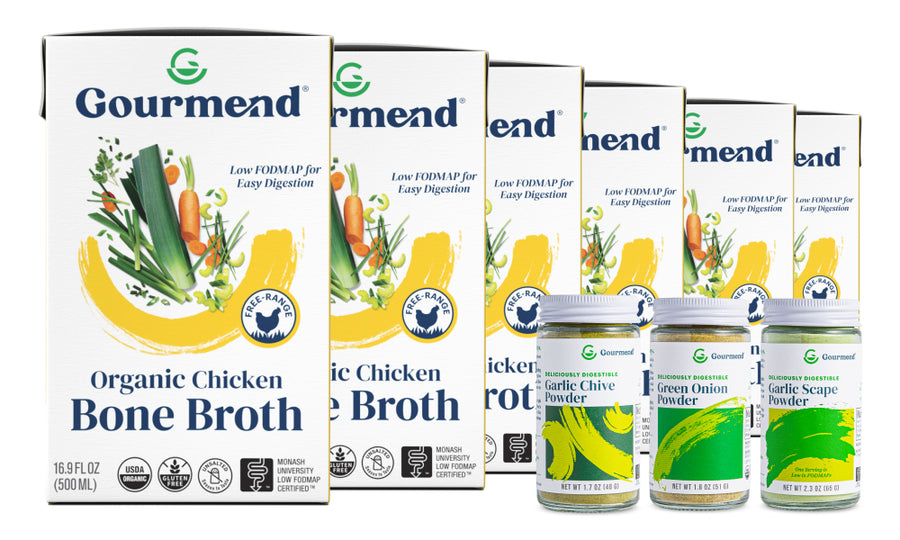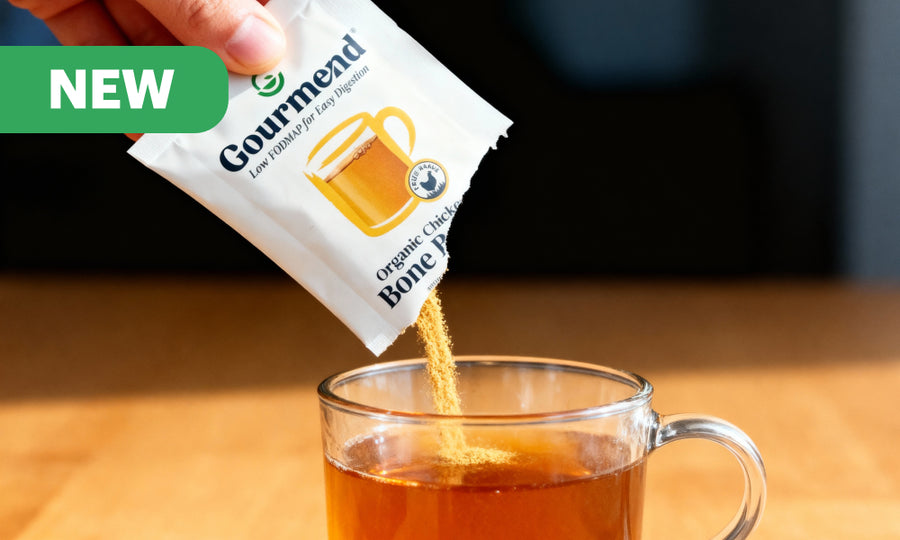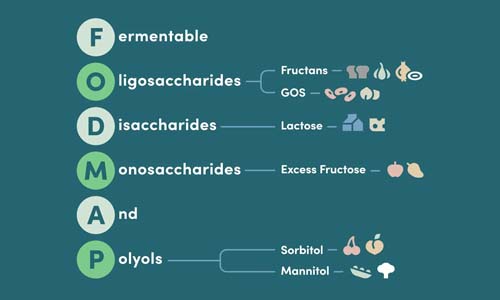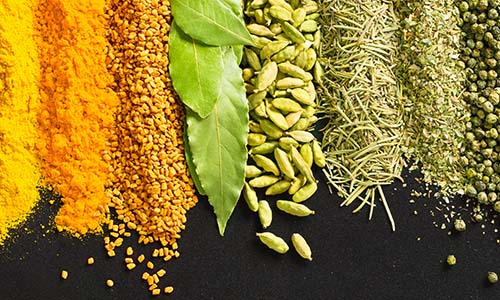Is Lettuce Low FODMAP? Everything You Need to Know
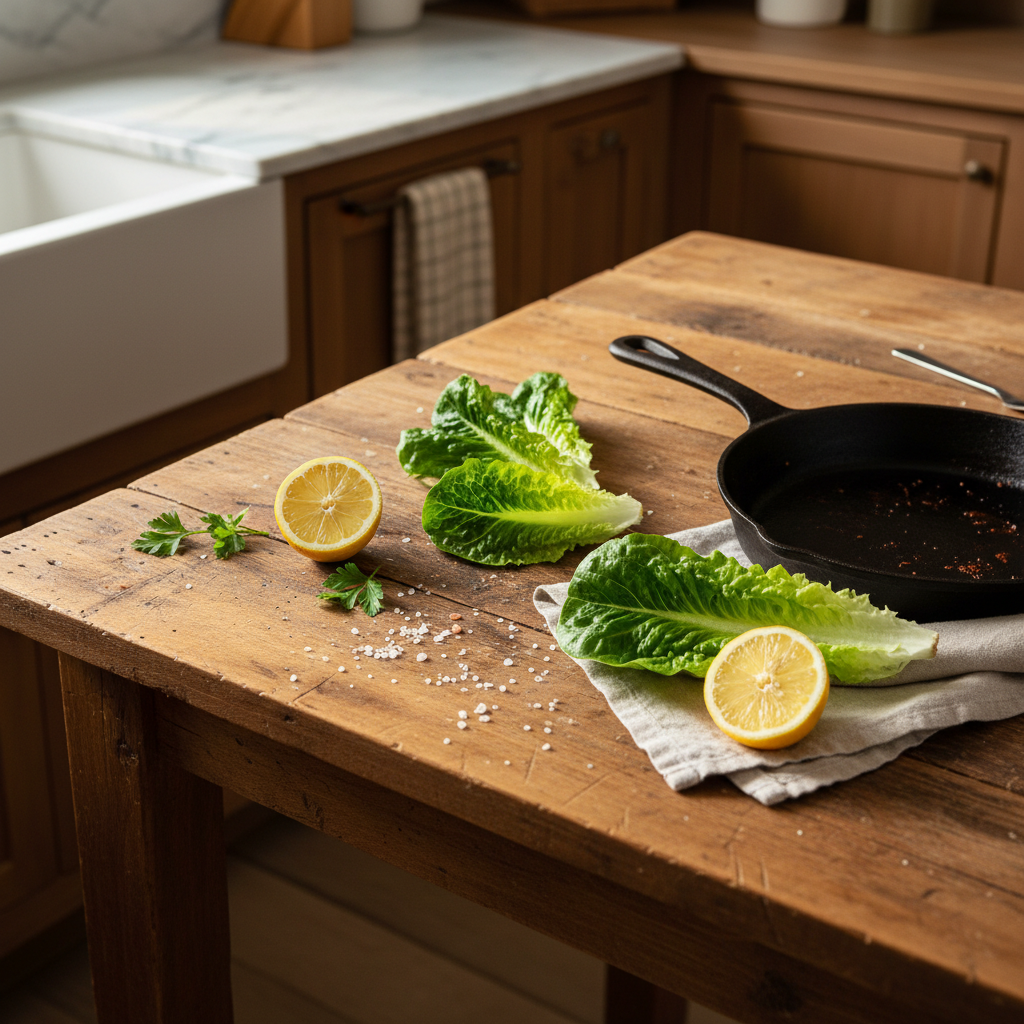
Key Takeaways
- All common lettuce varieties are low FODMAP and can be consumed without portion restrictions, making them ideal for IBS-friendly diets.
- Lettuce contains minimal fermentable carbohydrates and high water content, which supports easier digestion and reduces IBS symptoms.
- Iceberg lettuce offers the highest water content and lowest fiber, making it the safest choice during symptom flare-ups.
- Romaine lettuce provides higher vitamins A, K, and folate while remaining low FODMAP at typical serving sizes.
- Butter lettuce’s tender leaves are perfect for delicate dishes and low FODMAP wraps, with no tested upper limit on servings.
Table of Contents
- Why Lettuce Is Your Low FODMAP Best Friend
- Understanding FODMAPs and Why Lettuce Gets the Green Light
- The Complete Guide to Low FODMAP Lettuce Varieties
- Beyond Lettuce: Expanding Your Low FODMAP Leafy Green Repertoire
- Building the Perfect Low FODMAP Salad: A Blueprint
- High FODMAP Nuts & Seeds to Avoid
- Why Lettuce Sometimes Triggers Symptoms (And What to Do About It)
- Practical Strategies for Following a Low FODMAP Diet with Confidence
Why Lettuce Is Your Low FODMAP Best Friend
For anyone asking, is lettuce low FODMAP, the answer is a resounding yes, lettuce is one of the safest leafy greens for sensitive digestion. If you’re looking to stock your kitchen with more IBS-friendly essentials, consider starting with a Low FODMAP Pantry Starter Bundle to make meal prep easier and symptom-free.
All common lettuce varieties, iceberg, romaine, butter, and red leaf, are naturally low in fermentable carbohydrates. This makes them a staple for anyone following a low FODMAP diet or managing IBS. For a more comprehensive approach to gut-friendly eating, you might also enjoy the Low FODMAP Foodie Bundle, which includes a curated selection of essentials for delicious, safe meals.
Understanding FODMAPs and Why Lettuce Gets the Green Light

What Are FODMAPs and How They Affect Your Gut
FODMAPs, Fermentable Oligosaccharides, Disaccharides, Monosaccharides, And Polyols, are short-chain carbohydrates that can trigger digestive discomfort in sensitive individuals. These compounds pull water into your intestines through osmotic pressure, then ferment rapidly in your colon, producing gas, bloating, cramping, and unpredictable bowel habits.
The mechanism is straightforward but uncomfortable: your small intestine struggles to absorb these sugars completely, so they travel to your large intestine where gut bacteria feast on them, creating byproducts that can trigger IBS symptoms. Individual tolerance varies dramatically based on gut microbiome composition and intestinal permeability.
Why Lettuce Escapes the High FODMAP Category
Lettuce's unique nutritional profile makes it exceptionally gut-friendly. With less than 1 gram of fiber per cup, primarily insoluble fiber that doesn't ferment, lettuce contains virtually zero fructans, GOS, lactose, excess fructose, or polyols that trigger symptoms.
Its 95% water content aids hydration without fermentation, creating a dramatically different digestive experience than high FODMAP vegetables like artichokes (loaded with fructans) or mushrooms (rich in mannitol). This minimal carbohydrate load positions lettuce as the reliable foundation you can build around confidently, even during strict elimination phases.
The Complete Guide to Low FODMAP Lettuce Varieties
Iceberg Lettuce - The Ultra-Safe Classic
FODMAP Status: Green light, unlimited serving
Best for: Maximum crunch during sensitive days, elimination phase safety
Iceberg lettuce delivers the highest water content (96%) and lowest fiber load of any lettuce variety, making it your go-to choice when symptoms flare. Its mild flavor and substantial crunch work perfectly for lettuce wraps, crispy salad bases, and raw accompaniments to rich proteins cooked in Organic Chicken Bone Broth | Low FODMAP & Unsalted.
Romaine Lettuce - Nutrient-Dense and Gut-Friendly
FODMAP Status: Low FODMAP up to 75g (approximately 1 cup chopped)
Best for: Caesar-style salads, grilled preparations, hearty lunch bowls
Romaine provides significantly higher vitamin A, K, and folate than iceberg while maintaining excellent digestive tolerance. Its sturdy ribs hold up beautifully to grilling, and Monash testing confirms safety at typical salad portions, no obsessive weighing required.
Butter Lettuce - Tender and Sweet
FODMAP Status: Low FODMAP, no tested upper limit
Best for: Elegant plated salads, Asian-inspired lettuce cups, delicate sandwich layers
Butter lettuce's delicate, slightly sweet leaves create a melt-in-your-mouth texture that elevates simple preparations. Its pliable structure makes perfect cups for low FODMAP fillings seasoned with Organic Garlic Chive Powder and Organic Garlic Chive Salt instead of traditional aromatics.
| Variety | Water Content | Fiber per Cup | Vitamin A | Best For |
|---|---|---|---|---|
| Iceberg | 96% | 0.7g | Low | Maximum crunch, sensitive days |
| Romaine | 95% | 1.0g | High | Nutrient density, grilling |
| Butter | 95% | 0.6g | Moderate | Delicate dishes, wraps |
| Red Leaf | 94% | 0.5g | High | Color contrast, mixed greens |
Beyond Lettuce: Expanding Your Low FODMAP Leafy Green Repertoire
While lettuce is low FODMAP across all varieties, you shouldn't limit yourself to just these crisp options. Several other leafy greens remain gut-friendly and can add nutritional density and flavor complexity to your meals.
Spinach (Baby and English)
Serving size: 1 cup raw baby spinach or ½ cup cooked English spinach remains low FODMAP. This nutritional powerhouse delivers iron, calcium, and magnesium while maintaining a mild flavor that disappears into smoothies or wilts beautifully in warm salads. Baby spinach offers tender texture perfect for raw applications, while mature English spinach provides more robust flavor when sautéed.
Arugula and Radicchio
Arugula brings peppery bite at 1 cup serving safely, while radicchio adds bitter complexity and visual drama in tested portions. Both can overwhelm sensitive palates, but massaging arugula leaves with lemon juice for 2-3 minutes or quick-pickling radicchio in rice wine vinegar mellows their aggressive flavors while maintaining their distinctive character.
Swiss Chard and Kale
Swiss chard remains safe at 1 cup chopped raw, remove thick stems if texture-sensitive. Kale passes Monash testing at 1 cup portions, but requires proper preparation. Massage kale leaves with lemon juice and salt for 3-4 minutes to break down tough fibers and reduce bitterness. Never cook these greens with garlic-chive stems or chive sprigs; instead use green leek tops for aromatic depth without FODMAPs.
Bok Choy and Napa Cabbage
These Asian greens bring umami and satisfying crunch to your repertoire. Bok choy stays safe up to 1 cup and pairs beautifully with ginger and sesame flavors. Napa cabbage maintains its low FODMAP status at 1 cup raw or cooked, offering a milder alternative to regular cabbage with excellent versatility in both fresh and fermented applications.
Rotation Strategy: Aim for 3-4 different leafy greens across seven days to maximize micronutrient diversity without palate boredom. This approach supports gut microbiome health while keeping meals exciting.
For more inspiration on incorporating a variety of vegetables into your low FODMAP diet, check out this guide to low FODMAP vegetables.
Building the Perfect Low FODMAP Salad: A Blueprint

Creating satisfying, low FODMAP lettuce salads requires strategic layering of textures, flavors, and nutrients. This systematic approach ensures every bowl delivers gourmet results without digestive distress.
Step 1: Choose Your Lettuce Base (2-3 cups)
Start with one or two complementary lettuce types for textural contrast. Pair crispy iceberg with tender butter lettuce, or romaine with peppery arugula. This foundation provides volume and hydration while remaining completely safe for sensitive digestion.
Step 2: Add Low FODMAP Vegetables for Color and Crunch
Safe choices in tested portions: Cherry tomatoes (5 tomatoes max due to fructans), cucumber (unlimited), red and green bell peppers (¾ cup raw), carrots (1 medium), radishes (unlimited), zucchini ribbons (⅓ cup cooked), baby corn (adds sweetness), and green beans (15 beans maximum).
Roasted vegetable technique: Toss cubed sweet potato, parsnips, or eggplant in garlic-infused olive oil (fructans don't transfer to oil), roast at 425°F for 25-30 minutes until caramelized. Cool before adding for appealing warm-cold contrast. For a delicious side dish idea, try these low FODMAP crisp roasted baby potatoes.
Step 3: Incorporate Smart Carbohydrates
Quinoa (¾ cup cooked) provides complete protein and fluffy texture. Brown or black rice (1 cup cooked) adds substantial heft for meal-worthy salads. Sorghum (½ cup cooked) contributes ancient grain appeal with satisfying chew. Roasted potato cubes from waxy varieties hold their shape when tossed with chive sprigs and Dijon mustard.
Step 4: Add Strategic Sweetness
Limit to ONE fruit per salad to control fructose load: blueberries (20 berries), strawberries (5 medium sliced), mandarin segments (1 whole fruit), cantaloupe cubes (¾ cup), or pomegranate seeds (2 tablespoons) for jewel-like tartness.
Step 5: Include Crunchy Toppings
Walnuts or pecans (10 halves) provide healthy fats, toast for deeper flavor. Pumpkin seeds (2 tablespoons) boost zinc and magnesium. Sunflower seeds offer budget-friendly crunch, while pine nuts (1 tablespoon) add buttery richness for Mediterranean vibes. Avoid cashews and pistachios due to their high GOS and fructan content.
High FODMAP Nuts & Seeds to Avoid
Choose Your Protein
Plant-based options: Canned and thoroughly drained chickpeas (¼ cup max) or lentils (⅓ cup cooked) provide plant protein without overwhelming FODMAP loads. Firm tofu cubed and pan-fried in garlic-infused oil delivers satisfying texture, while tempeh (100g serving) offers fermented benefits for easier digestion.
Animal-based proteins: Hard-boiled eggs (2 eggs) remain the classic portable option. Grill chicken breast using Organic Vegetable Broth (Low FODMAP & Unsalted) for moisture without added FODMAPs. Fresh or canned salmon (3-4 oz) contributes omega-3s that support gut lining health. Turkey breast or nitrate-free bacon bits add savory depth.
Craft a Low FODMAP Dressing
The golden rule: avoid garlic cloves, onion bulbs, and honey in large amounts.
Approved flavor builders include: Garlic-infused olive oil (fructans remain in solid garlic, not the oil), finely minced Organic Green Onion Powder or Organic Green Onion Salt, thinly sliced green leek tops for mild onion essence, Dijon or whole-grain mustard, fresh lemon or lime juice, low FODMAP vinegars (rice wine, red wine, white wine, balsamic in moderation), maple syrup (1 tablespoon max), and fresh grated ginger.
- Classic Lemon-Dijon: 3 tbsp lemon juice + 1 tbsp Dijon + ⅓ cup garlic-infused olive oil + salt + pepper
- Asian-Inspired Ginger: 2 tbsp rice wine vinegar + 1 tbsp tamari + 1 tsp grated ginger + 1 tsp maple syrup + 3 tbsp vegetable oil
- Creamy Tahini: 2 tbsp tahini + 2 tbsp lemon juice + 2 tbsp water + pinch cumin + salt
Finish with fresh herbs, basil, cilantro, mint, parsley, or dill, all low FODMAP and transformative. Tear leaves by hand just before serving to preserve volatile oils. Use herbs generously; they're flavor workhorses when garlic and onion are off the table.
Why Lettuce Sometimes Triggers Symptoms (And What to Do About It)
Even though the question "is lettuce low fodmap" has a clear yes answer, some individuals still experience discomfort. Understanding these scenarios helps optimize tolerance.
Insoluble Fiber Sensitivity
Lettuce's insoluble fiber, while minimal, can irritate hypersensitive colons during IBS flares. Choose butter or iceberg lettuce (lowest fiber) over romaine during symptomatic periods. Chew thoroughly to mechanically break down fiber strands, and start with ½ cup portions, gradually increasing as tolerance improves.
Food Poisoning and Contamination
Lettuce ranks among the most recalled produce items due to E. coli, Listeria, and Salmonella contamination.
Safe handling protocol: Rinse under cold running water for 30+ seconds. Separate and wash individual leaves, even for pre-washed bags. Soak in vinegar solution (1 part vinegar to 3 parts water) for 5 minutes if immune-compromised. Dry thoroughly in salad spinner or with paper towels to prevent bacterial growth. Store in breathable produce bags, not sealed plastic.
Histamine Intolerance Overlap
Some IBS patients also react to histamine-rich foods. While fresh lettuce is low-histamine, wilted or oxidized lettuce with brown edges can trigger headaches, hives, or digestive upset. Buy whole heads, tear just before eating, and avoid bagged greens stored more than 2-3 days.
Dressing and Topping Culprits
Perceived "lettuce intolerance" frequently traces to hidden high FODMAP ingredients: croutons made from wheat bread, creamy dressings with garlic-chive stems or chive sprigs, dried fruit with excess fructose, or honey-based glazes exceeding 7g added sugar per serving.
Make dressings from scratch using approved ingredients, or choose certified low FODMAP brands. Avoid pre-made salad kits with mystery seasoning packets that often contain banned ingredients. For a hearty main course salad idea, try this recipe for low FODMAP miso salmon as a protein-packed topping.
Practical Strategies for Following a Low FODMAP Diet with Confidence

Leverage the Monash University FODMAP Diet App
This $8 app provides non-negotiable guidance for serious symptom management. Real-time portion size guidance uses a traffic light system (green/yellow/red), with regular updates as new foods undergo lab testing. Create custom meal plans and shopping lists, plus scan barcodes for packaged products.
Don't rely on free FODMAP lists from random blogs. Only Monash and FODMAP-trained dietitians provide evidence-based recommendations. For more on the science behind FODMAPs and IBS, see this overview from Monash University.
If you want to dive deeper into the clinical research, read this peer-reviewed article on the efficacy of the low FODMAP diet for IBS.
Frequently Asked Questions
Why is lettuce considered a low FODMAP food and safe for people with IBS?
Lettuce is low FODMAP because it contains minimal fermentable carbohydrates, which means it’s less likely to cause digestive discomfort. Its high water content also supports easier digestion, making it a safe, gentle choice for people managing IBS symptoms.
Which lettuce varieties are best suited for managing IBS symptoms during flare-ups?
Iceberg lettuce is ideal during IBS flare-ups due to its very high water content and low fiber, which help reduce digestive strain. Romaine and butter lettuce are also excellent options, offering nutrients and tenderness without triggering symptoms.
How does the water and fiber content in different types of lettuce affect digestion on a low FODMAP diet?
Higher water content in lettuces like iceberg aids hydration and eases digestion, especially during sensitive times. Fiber levels vary, iceberg has the least, making it gentler, while romaine offers more fiber and nutrients but remains low FODMAP at typical servings, supporting balanced digestion.
Are there any serving size restrictions for consuming lettuce on a low FODMAP diet?
No, all common lettuce varieties can be enjoyed without serving size restrictions on a low FODMAP diet. This makes lettuce a versatile, worry-free ingredient for anyone seeking flavorful, gut-friendly meals.
